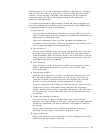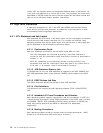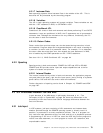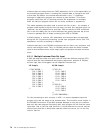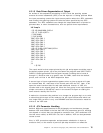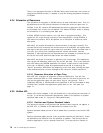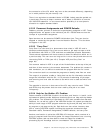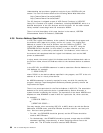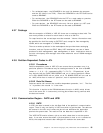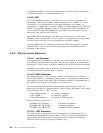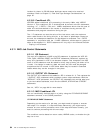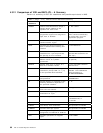the conversion of the JCL which may have to be converted differently, depending
on in which partition the job normally runs.
There is no equivalent to standard labels in OS/390. Labels must be spelled out
in each step. One way to keep a common set of labels in OS/390 is to use the
JCL INCLUDE statement. In rare cases another possibility is to use dynamic
allocation to replace standard labels.
4.3.5.2 Permanent Assignments and POWER Defaults
Readers, punches, printers or disks can be permanently assigned in VSE. These
assignments do not appear in the individual job JCL. OS/390 does not use the
concept of a permanent assignment.
Spool devices can be started at POWER initialization time. They can also be
stopped or started by the operator from the Attention Routine. This also does
not appear in the JCL.
4.3.5.3 ″Carry-Over″
Carry-Over is a user term for a phenomenon that exists in VSE JCL and is
otherwise undocumented. Carry-over occurs where a job step has tape or disk
file definitions with DLBL or TLBL and there are additional execute statements.
These execute statements will have access to these file definitions which are in
a previous step. This can occur as long as this is not a new job and there are no
intervening DLBL or TLBL (see 4.5.3, “Sample VSE plus Carry-Over” on
page 94).
One common method in VSE is to put all the file definitions at the top of the job
and then all that remains is the execute statements. The problem this creates is
with translation, as it is difficult to associate the program with the file it uses.
The conversion task is to translate the programs to identify what files are used.
The output is to produce a table or listing that has the file information and then
merge the information with the JCL. It is a process of submitting all job steps
and removing one level after the other to see which one is used and which one
is not.
The opposite is also true in that some of the JCL may never be used. TLBLs
and DLBLs may be present that are never used by that job or are used
infrequently.
4.3.5.4 Help for the Hidden JCL Problem
Recent releases of VSE/ESA (Version 2.2 and later, and Version 1.4 and 2.1 with
maintenance added) provide additional functions which can help with the Hidden
JCL problem. The availability of Opti-Audit for VSE (also available from Barnard
Software, Inc. as well as a part of the VSE/ESA Version 2.2 system) provides the
ability to track usage of VSE program resources by job and job step, and of files
by program or job step and by job. Opti-Audit can also collect inventory data
from a running VSE/ESA system including the resources allocated through
Standard Labels, Permanent Assignments, POWER defaults, and carry-over.
Another new function is called the VSE/ESA JCL Analyzer, which consists of a
group of programs and files which gather file usage information from a running
VSE/ESA system, and use that data to create an output file suitable for
processing by the VisualAge tools on a workstation. The Application
Chapter 4. Job Control Language (JCL) Differences and Considerations 79



